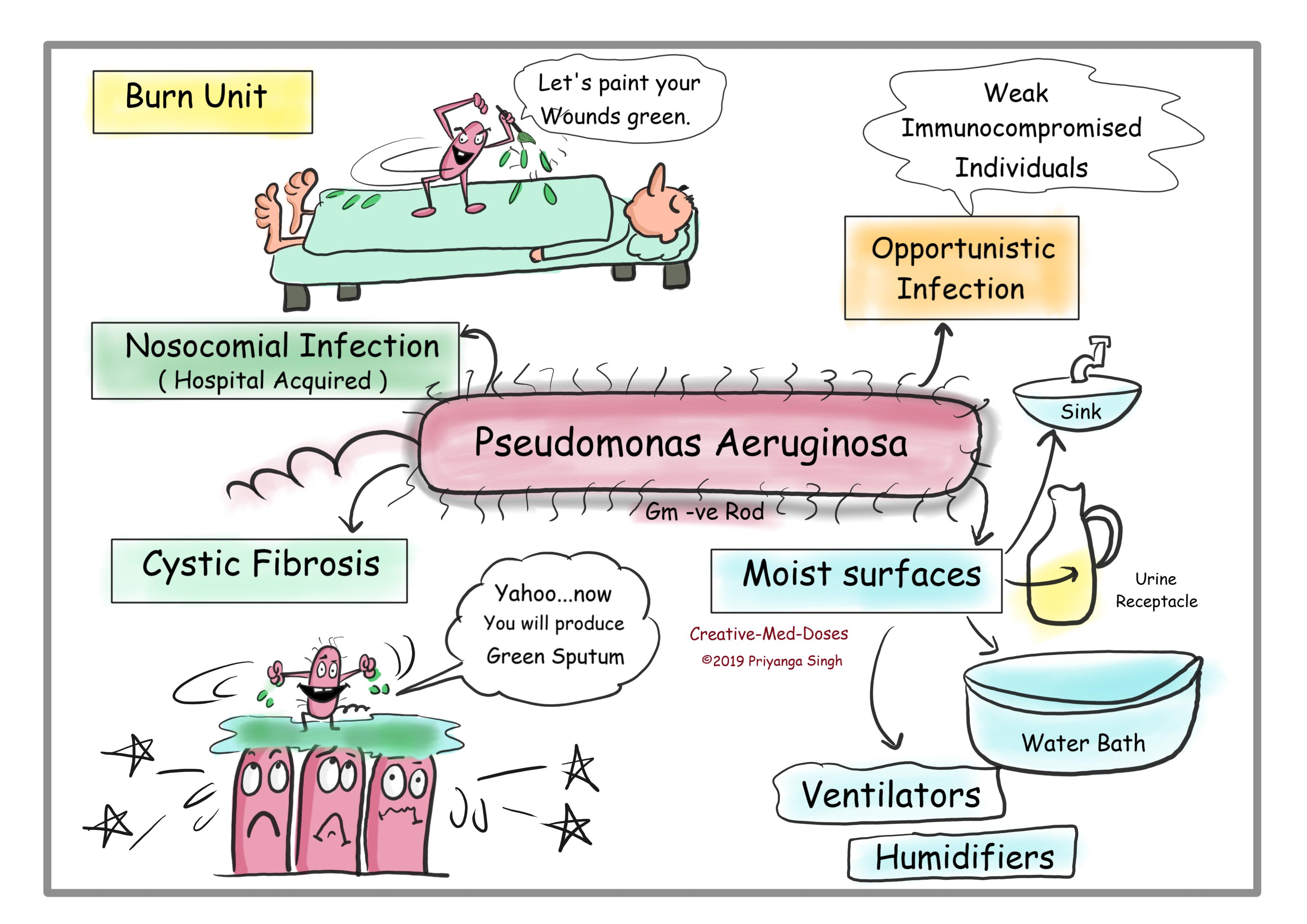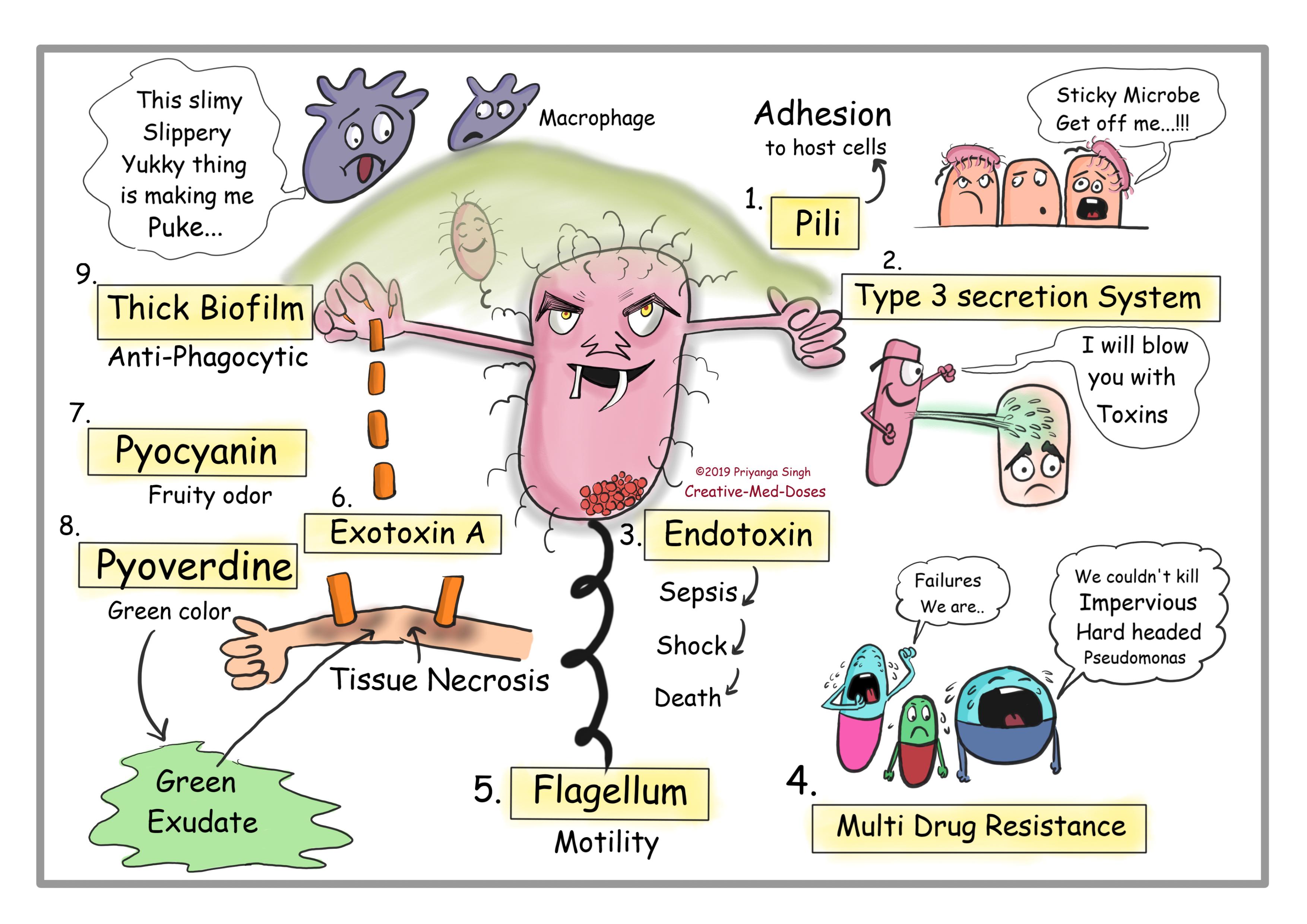Pseudomonas aeruginosa: Nosocomial terrorist
Pseudomonas aeruginosa is gram-negative microorganism rod, which cause opportunistic infections in human beings whose defenses are altered. Immunocompromised, recently operated and burned patients in hospitals are most commonly affected.
...

...
It is abundantly found in environment but moist surfaces example sink, water bath, humidifiers, ventilators and urine receptacles are its favorite.It is abundantly found in environment, but moist surfaces example sink, water bath, humidifiers, ventilators and urine receptacles are its favorite.
Pathogenesis
Pseudomonas is an opportunist microbe which causes disease when there is compromise in host defense system, mucosal injury or antibiotic mediated suppression of normal flora.
Intensive Care Unit (ICU) and Burn unit patients are most commonly affected. Cystic Fibrosis cases harbor pseudomonas in their lungs causing recurrent respiratory infections.
Virulent Factors
It produces large number of putative virulence factors which have pivotal role in variety of clinical manifestations.
- Flagellum and pili – flagellum provide motility which is important in host invasion and spread. Flagellum and pili both demonstrate adhesive properties and they adhere best on injured mucosal surfaces.
- Endotoxin – it can lead to sepsis, shock and DIC (disseminated intravascular coagulation).
- Exotoxin A- it impairs protein synthesis by inactivating elongation factor 2. Reduced protein synthesis causes tissue necrosis and prepare the soil for wound infection.
- Thick Biofilm – Biofilm protects bacteria from phagocytosis and makes bacteria resistant to multiple drugs.
- Pyocyanin and Pyoverdine – leads to blue green pigmentation and fruity odor to the cultured specimen, wound exudate and sputum. It also maintains fitness of bacterial cells and biofilm formation.
- Multidrug resistance – Beta lactamase and aminoglycoside modifying enzyme makes significant numbers of antibiotics useless on pseudomonas.
- Type 3 and Type 2 secretion System – these secretion systems are responsible for toxin invasion in host cell and causes cell injury and cell death.
...

...
Clinical Manifestation
- Bacteremia and Shock – most commonly in ICU and Burn patients.
- Ecthyma Gangrenosum- most common in critically ill and immunocompromised, characteristic hemorrhagic pustules which turn into necrotic ulcers.
- Nosocomial infections- ventilator associated and catheter associated infections.
- Hot tub folliculitis
- Pneumonia – in cystic fibrosis cases.
- Burn wound infections
...

...
Treatment
- IV ceftazidime in bacteremia and sepsis
- Carbapenems
- Fluoroquinolones
- Cephalosporins
Further read https://www.ncbi.nlm.nih.gov/pmc/articles/PMC3785349/
Revision for today https://creativemeddoses.com/topics-list/giardia-explosive-diarrhea-for-hikers/